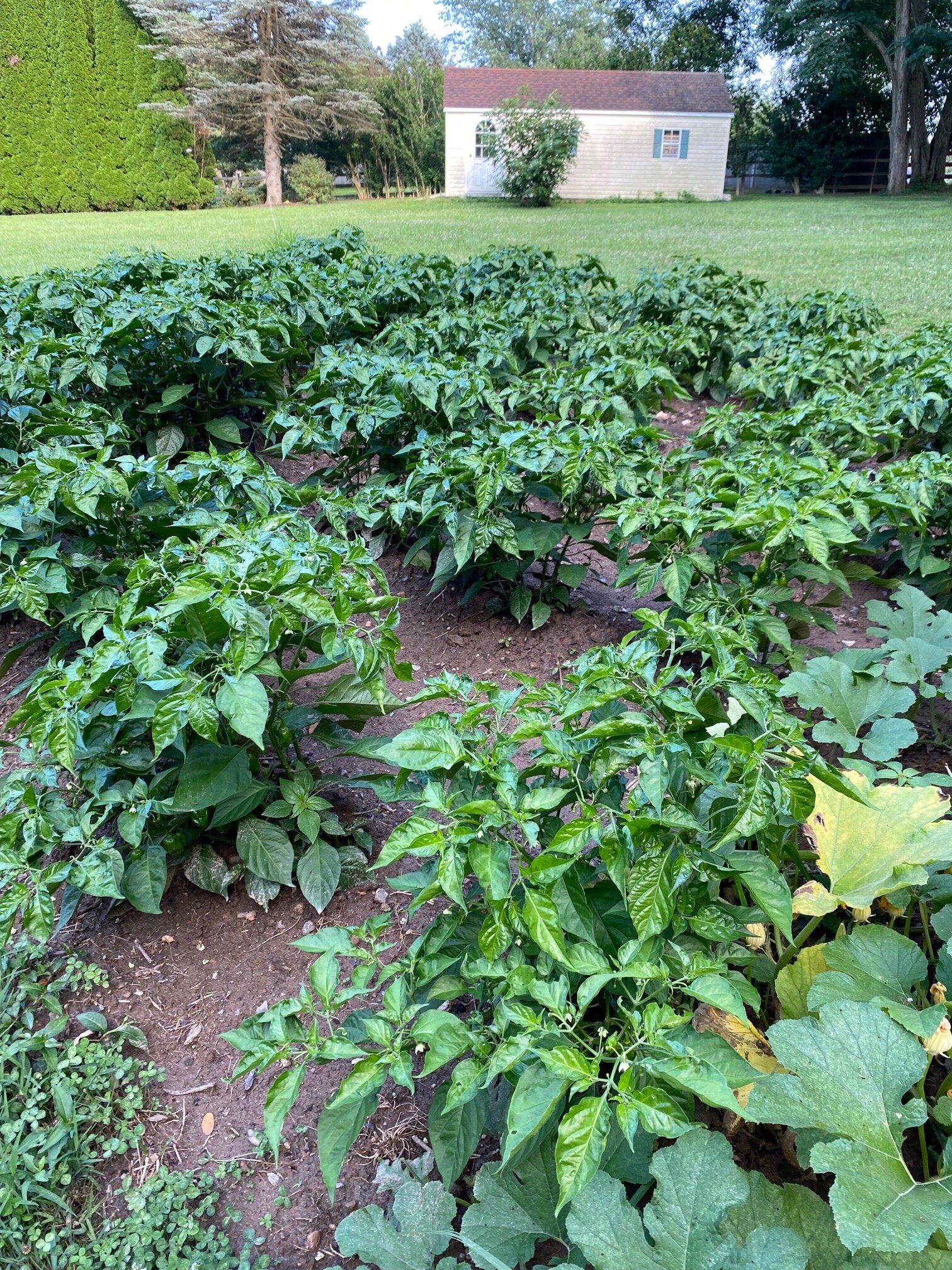Some Like it Hot
It’s summertime and the living is easy – and hot.
But some like it even hotter – which brings to mind a local summer crop that has developed almost a cult following among our vendors and shoppers: hot peppers.
They’re small but mighty, and are just beginning to come into season. Whether you’re a local farmer that grows and picks them or you’re a local food artisan who turns them into spicy salsas and hot sauces, working with these hot peppers is a tricky operation.
Here at Farm to City, we wanted to know how they do it. How do these farmers and food artisans work with these flavor bombs? So we reached out to some of our market producers to find out.
Let’s talk hot peppers!
Fermenting with Fishtown Ferments
FTC: Which peppers do you like working with the most?
Eric Iacone: Fresnos are great. They’re very versatile, both for making sauces and for pickling. They have a floral flavor that can cut through the heat, adding a distinct flavor to any sauce.
I also love working with Jimmy Nardello peppers. They’re sweet, not spicy. I pickle them and use them in my hoagie spread relish.
And I am always excited to work with the habanado. It’s a habanero pepper that’s had the heat bred out of it. More local farmers are starting to grow them.
FTC: How do you work safely with so many hot peppers?
EI: Gloves up! I don’t always wear a mask, although I probably should because the fumes from the raw peppers can be a lot to take in.
FTC: As a maker of hot sauce, what do YOU look for in a hot sauce?
EI: I want the hot sauce to be about the pepper, the flavor of the pepper. Too many times the pepper is hiding behind a lot of sharp vinegar or, to balance out the heat, too much sugar. Fermenting a pepper mash and working with that mash means I don’t have to add too much water or vinegar to get the consistency I want. And the pepper flavor isn’t diluted.
FTC: What flavor notes should we look for in hot peppers besides all that heat?
EI: The heat comes from the capsaicin inside the pepper, but behind the heat there should be savory and floral flavors. Peppers in the scotch bonnet category, peppers like the habanero or the new habanado, have a tart and zesty, a citrusy, flavor. Those peppers are a great complement for fruit pairings because of that citrus flavor.
Noteworthy: The Fishtown Ferments Oaxacan Red Chili and Smoked Tomato Sauce is a hot sauce featuring ripe red chile de agua peppers from Heritage Farm. The seeds came all the way from Oaxaca, Mexico. The peppers are mashed up and fermented with Pennsylvanian tomatoes that were smoked over applewood, as well as onion and garlic.
Fishtown Ferments is at the Dickinson Square Park Farmers’ Market.
Canning at Coddiwomple Canning Company
FTC: How do you work safely with so many hot peppers?
Kim and Brian: When we’re in the kitchen just cutting the peppers up, we only wear masks. But when we’re grinding all those peppers together, it’s gloves and goggles and masks and we need a well-ventilated area.
“I’ve gotten burned from working with too many peppers before,” says Brian. “A capsaicin burn feels like a very weird sunburn, almost like a low-grade chemical burn. Not fun.”
FTC: What flavor notes should we look for in hot peppers besides all that heat?
K/B: Habaneros, and really any pepper in the scotch bonnet family, will have a super-floral, tropical fruit flavor to it that is great for fermentation. I find that more acidic peppers, like jalapenos and serranos, are best when smoked and go great with fattier sauces, like a BBQ sauce.
Noteworthy: We love Coddiwomple’s Golden Chile Pepper Mix. “We work with Hill Creek Farm from the Boyertown area,” notes Kim. “They grow a very nice mix of yellow hot peppers: yellow cayenne, bird’s beak, and tequila sunrise. They looked so pretty together, so we made a special mix of just those peppers, dried them out, ground them into powder, and called it the Golden Chile Pepper mix.”
Coddiwomple Canning Company is at the Rittenhouse Tuesday, Bryn Mawr, and Dickinson farmers’ markets.
A Taste of Heat with Taste of Puebla
According to Chris Castenada, Jr.:
We go through about 30 pounds of habaneros per week. My dad even has about forty to fifty habanero plants in his garden just to help us keep up.
We use habaneros in all the sauces and the guacamole.
We wash them, de-stem them, and blend them with just a little bit of water. After we’re done blending them, we usually step outside for some fresh air. It’s like working with pepper spray sometimes.
Our Pico de Gallo and guacamole are meant to be mild in spice, so we add just a little bit of the blended habaneros to those sauces. For the salsa fresca [the green sauce], we blend eight habaneros per bucket, that is, about eight habaneros per fifty pints of salsa fresca.
Taste of Puebla is at the Bryn Mawr, Swarthmore, Fountain, Dickinson, and Media farmers’ markets.
From left to right: Ghost, Long Hot, Hot Cherry, Jalapeno, Serrano, Hungarian Wax
Not a Ghost of a Chance at McCann’s Farm Stand
How hot can hot really get? Try the ghost pepper, ranked among the hottest peppers in the world, according to the Scoville Scale. The only farm brave enough to grow this ultra-hot pepper is McCann’s Farm Stand.
FTC: Who actually buys the ghost pepper? Is it someone who makes hot sauce, either at the artisan level or commercially? Or maybe even a pepper spray manufacturer?
Anita from McCann’s Farm: “Mostly it’s 25 to 40 year old men wanting to see how hot it is. They won’t take my word for it. They’re pretty darn hot.”
McCann’s Farm is at the Jefferson and Gorgas Park farmers’ markets.
If You Can’t Stand the Heat...
For those of you nervous about working with such a spicy ingredient, we hope we didn’t scare you off too much. Even adding just a little bit of hot pepper to a recipe can open up the flavors and add some special zing to your meals. Keep in mind: you don’t have to use the whole pepper at once. Sometimes even just a little bit will do.
And remember to wash your knives and your cutting boards - and your hands - after working with them but don’t be afraid.
Here we offer just a couple recipes to get you started.
Habanero Peach Jam – quick and easy to make, perfect as an appetizer with soft goat cheese on crisp crackers or toast, or as a basting sauce for grilled chicken or pork.
Ghost Pepper Salsa – Okay, so we’re kicking things up a notch or two here by using the ghost pepper but you can make this easy salsa with any peppers you have on hand – even bell peppers (no judgement – we won’t call you “chicken” for not trying!)








